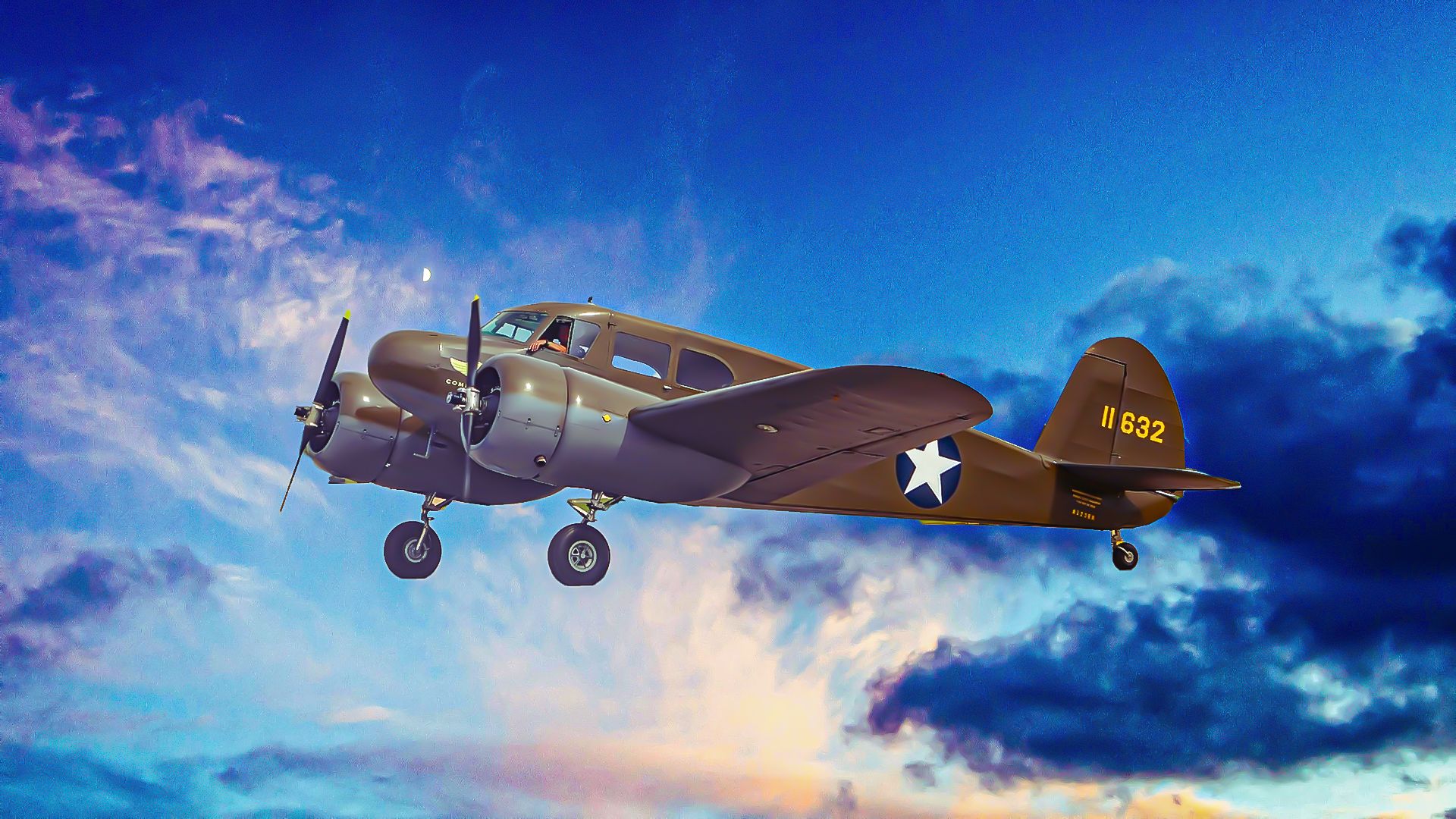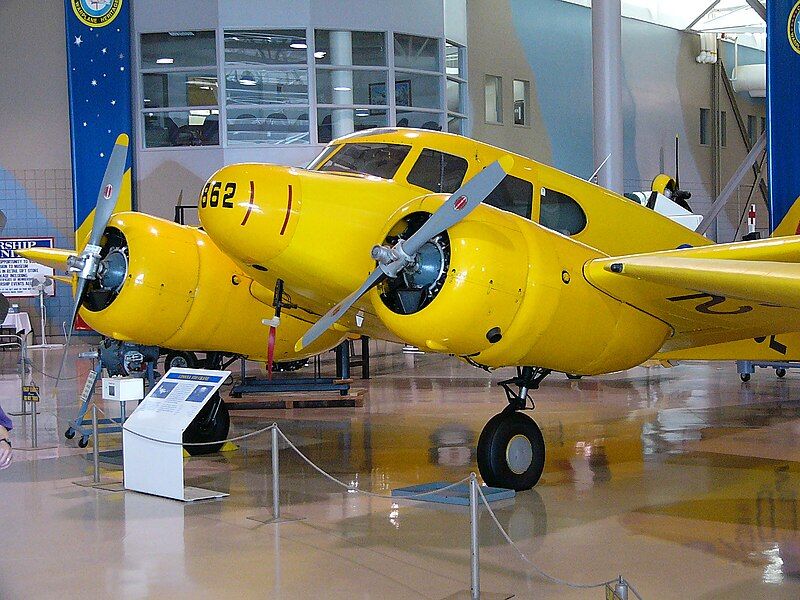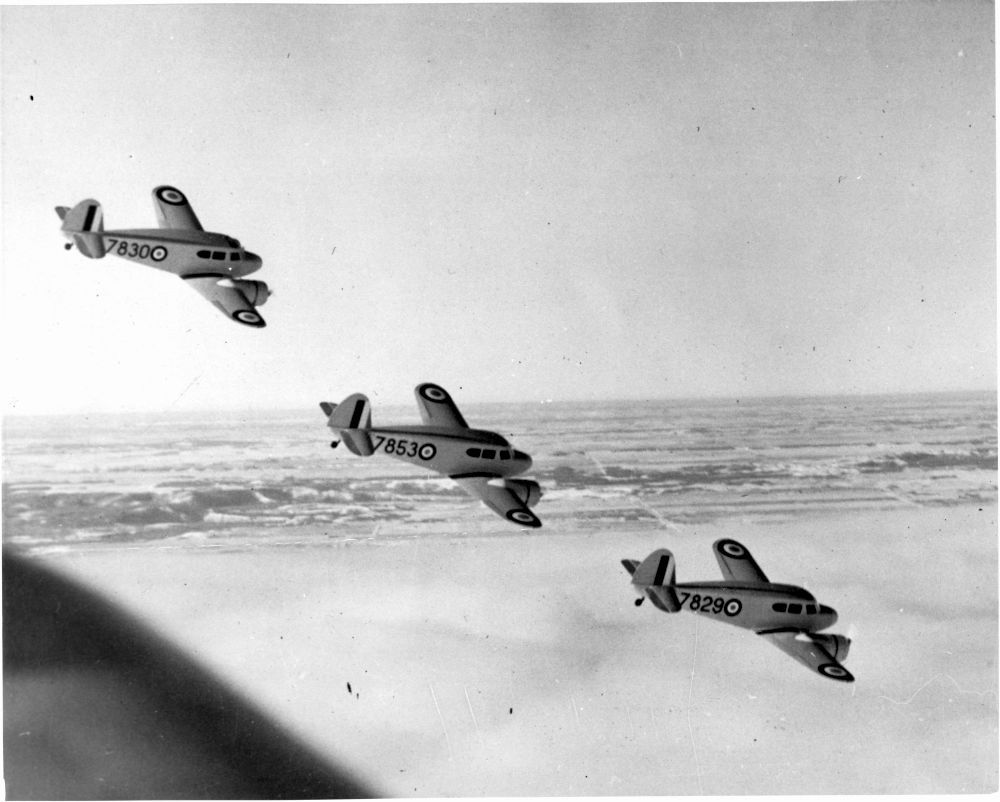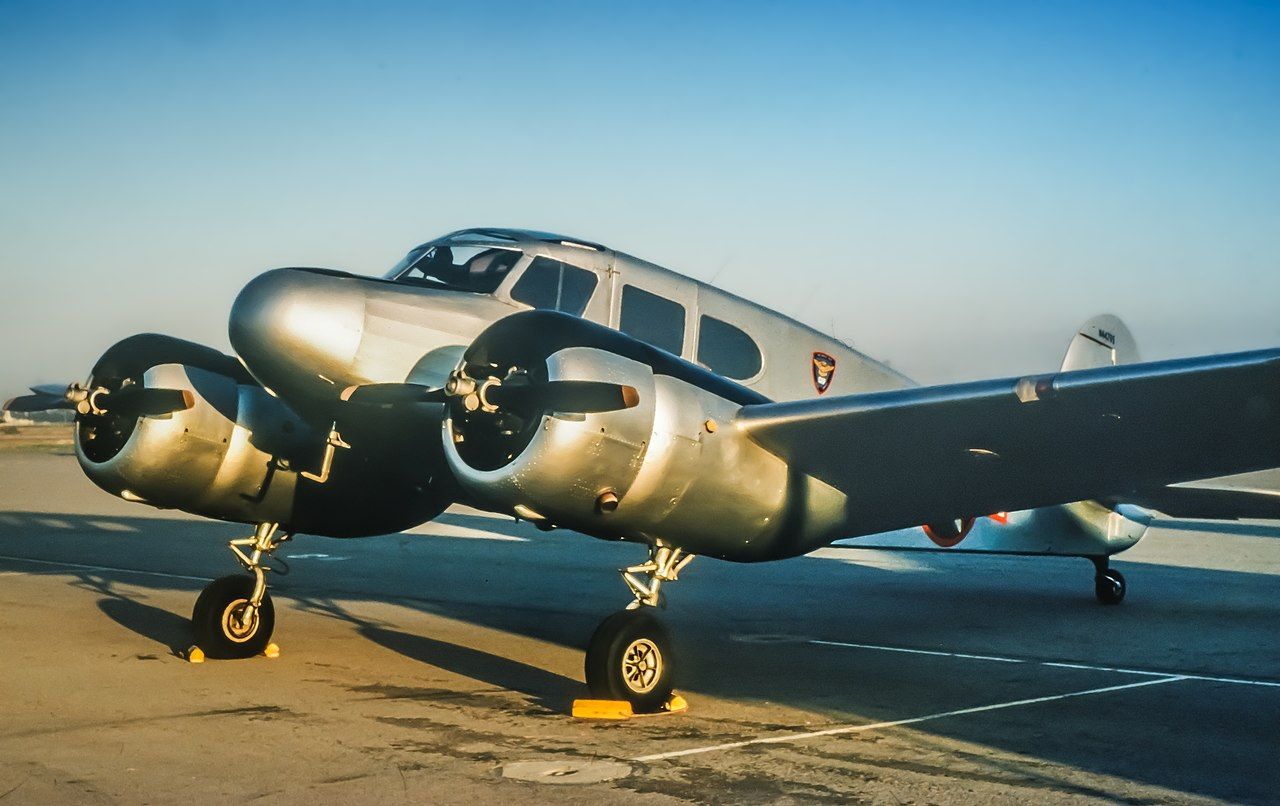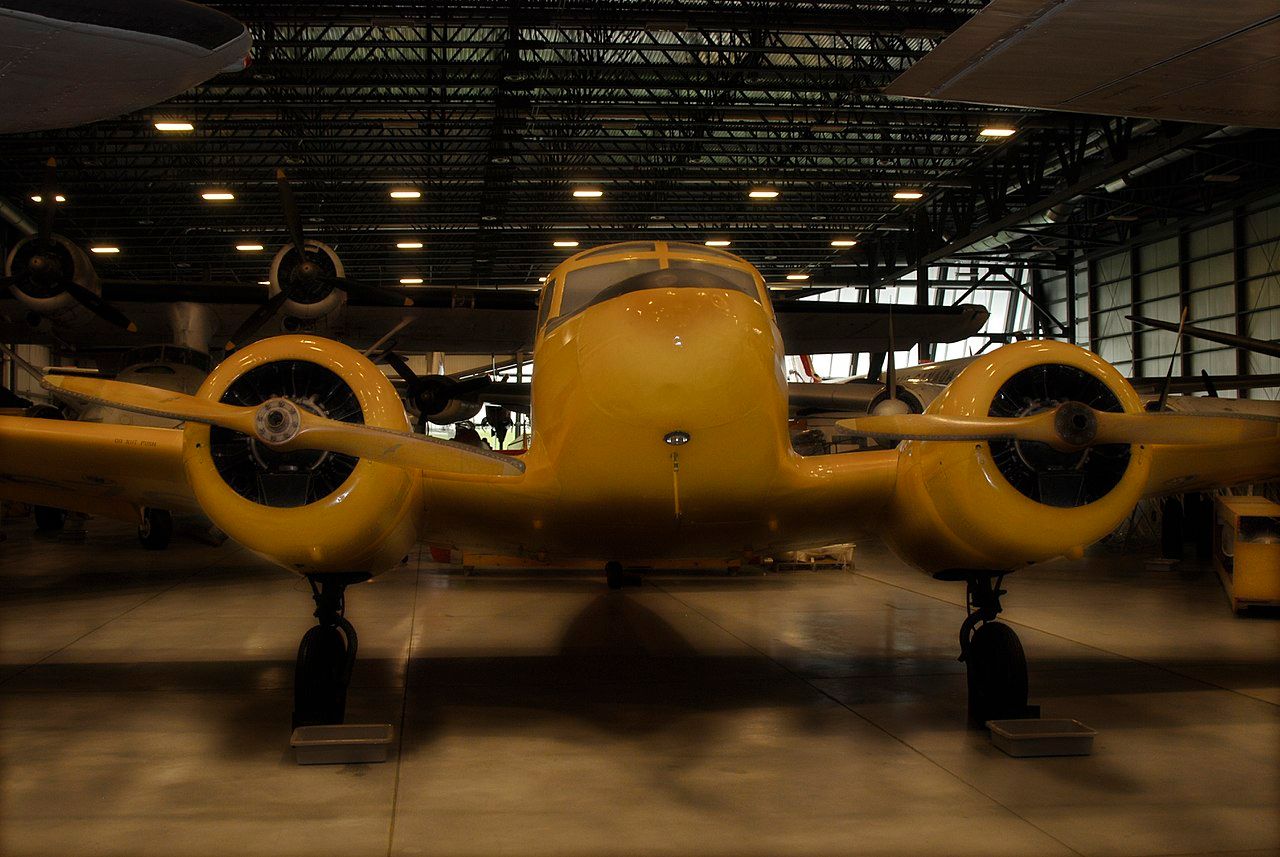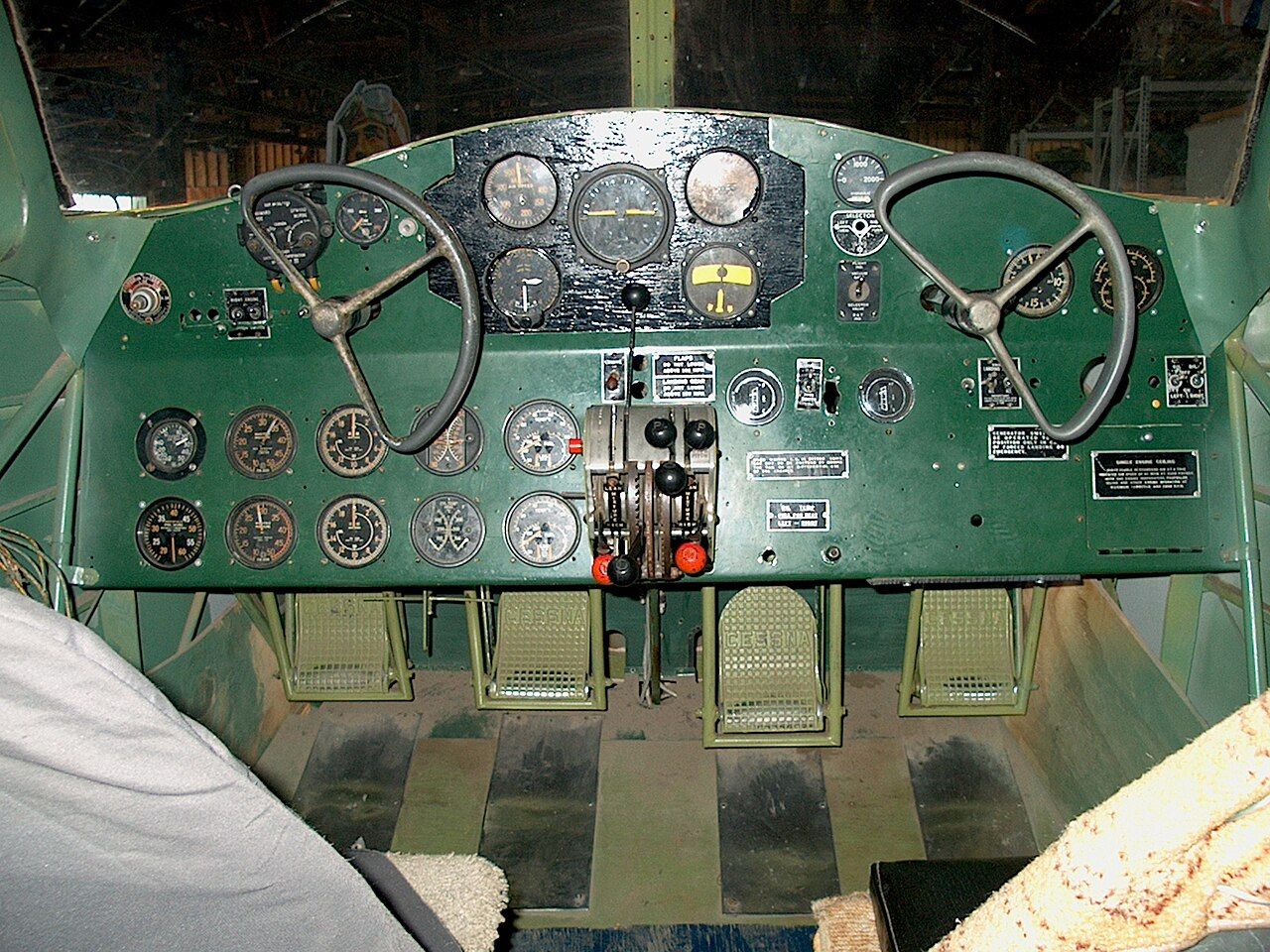Summary
- Cessna’s first twin-engine plane, the T-50, made its maiden flight in March 1939 under an extensive testing program.
- The wooden Crane design with a low wing and retractable gear was significantly lighter and cheaper to maintain than competitors.
- Operated by RCAF, the Crane was used for pilot training, instrument navigation, and multi-engine aircraft training during WWII.
The Cessna Crane is a military variant of the Cessna T-50 light transport aircraft designed and developed by Cessna in the late 1930s. Used during World War II, the twin-engine Crane enabled effective training missions that most single-engine trainers lacked. This article notes several notable features of the Cessna Crane.
1
Cessna’s first twin-engine airplane
First flight: March 26, 1939
- Crew: pilot + four
- Length: 32 ft 9 in (9.98 m)
- Wingspan: 41 ft 11 in (12.78 m)
- Height: 9 ft 11 in (3.02 m)
- Max takeoff weight: 6,062 lb (2,750 kg)
- Powerplant: 2 × Jacobs R-755-9 seven-cylinder, air-cooled, radial piston engine, 245 hp (183 kW) each
The Cessna T-50 (the original version of the Crane) was the company’s first twin-engine aircraft that entered the market. The T-50 performed its maiden flight in March 1939, three years after Clyde Cessna retired. The company went through an extensive testing program, ensuring the safe and secure airworthiness of the new aircraft.
The T-50 received its type certification exactly a year later in March 1940. The light transport aircraft was designed much differently than conventional aircraft at the time. The market wanted to bridge the gap between twin-engine military aircraft and single engine light training planes, the T-50 did just that.
Much lighter and cheaper than competitors
- Plywood on the structure and wings
- Tubular steel for reinforcement
- Fabric covers to keep it lightweight
- Low-wing design
- Retractable main landing gear
The Cessna Aircraft Company first produced the T-50 using wood and tubular steel to minimize the weight. Unlike much-heavier transport aircraft like Beechcraft Model 18, and multi-engine military planes, the T-50 (and Crane) were significantly light. The fabric-covered airplane featured a low wing cantilevered design and retractable main landing gear.
The wing structure featured laminated spruce spar beams, ribs made from thin plywood, and truss-style spruce. Apart from the reduced weight, the Cessna Crane was significantly cheaper to produce and maintain. The plywood-made wing leading edges and wingtips were strong enough to support the structure. The aircraft also featured electrically-actuated trailing edge wing flaps, allowing greater lift and stability at low speeds.
3
The Royal Canadian Air Force planes
Operated 822 examples
- Crane Mk.I: T-50s with minor equipment changes
- Crane Mk.IA: AT-17As delivered to RCAF under lend-lease
The Royal Canadian Air Force (RCAF) was one of the largest operators of the Cessna Crane aircraft. The RCAF operated a total of 822 examples between 1941 and 1949, comprising 640 Crane Mk.Is and 182 Mk.IAs. These aircraft were assigned to various stations and training schools, including:
- No. 3 Service Flying Training School RCAF (SFTS) — Calgary, Alberta
- No. 4 SFTS — RCAF Station Saskatoon
- No. 10 SFTS — RCAF Station Dauphin
- No. 11 SFTS — RCAF Station Yorkton
- No. 12 SFTS — RCAF Station Brandon
- No. 15 SFTS — RCAF Station Claresholm
- No. 1 Flying Instructor School — RCAF Station Trenton
- No. 2 Flying Instructor School — RCAF Station Vulcan/RCAF Station Pearce
- No. 3 Flying Instructor School — RCAF Station Arnprior
- Central Flying School — RCAF Station Trenton
4
Training for RCAF pilots
Most aircraft in the fleet were used for pilot training
- Student pilot training for multi-engine aircraft
- Instrument and navigation training
- Training for light transport missions
During World War II, the RCAF received 822 Cranes to train its student pilots of the British Commonwealth Air Training Plan’s Service Flying Training Schools (SFTS). The aircraft began to fill airfields in western Canada in 1941. The aircraft were primarily used to teach pilots to fly multi-engine aircraft at five SFTS schools.
At the end of the Second World War, many Cranes were sold as surplus aircraft for light transport operations. Small charter and utility operators continued to use the ex-RCAF and ex-US Navy aircraft. Some aircraft were equipped with floats to be used as bush planes in Canada.
5
Many names?
The Cessna T-50 held many names and designations
- Wichita Wobbler
- Bamboo Bomber
- Bobcat (US Navy aircraft)
Depending on the station and type of service, the Cessna Crane held many names. Almost all Canadian-acquired aircraft were used as pilot trainers across various divisions.
According to the Canada Aviation and Space Museum,
“The Crane had many nicknames, including “Wichita Wobbler”, and “Bamboo Bomber” In American service it was called the “Bobcat”. The Jacobs radial engines were referred to as “Shakey Jakes”. Even though the Crane was not an ideal training aircraft, due in part to its poor single-engine performance and load-carrying capability, it adequately filled the training needs of its time.”

